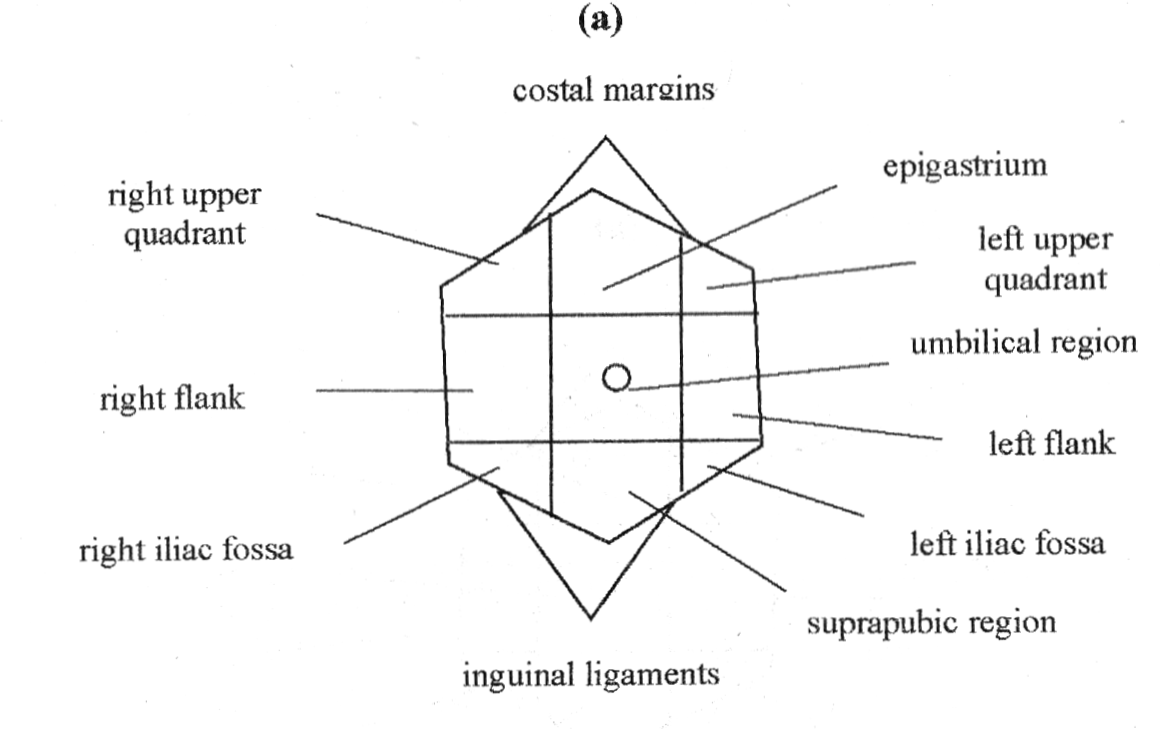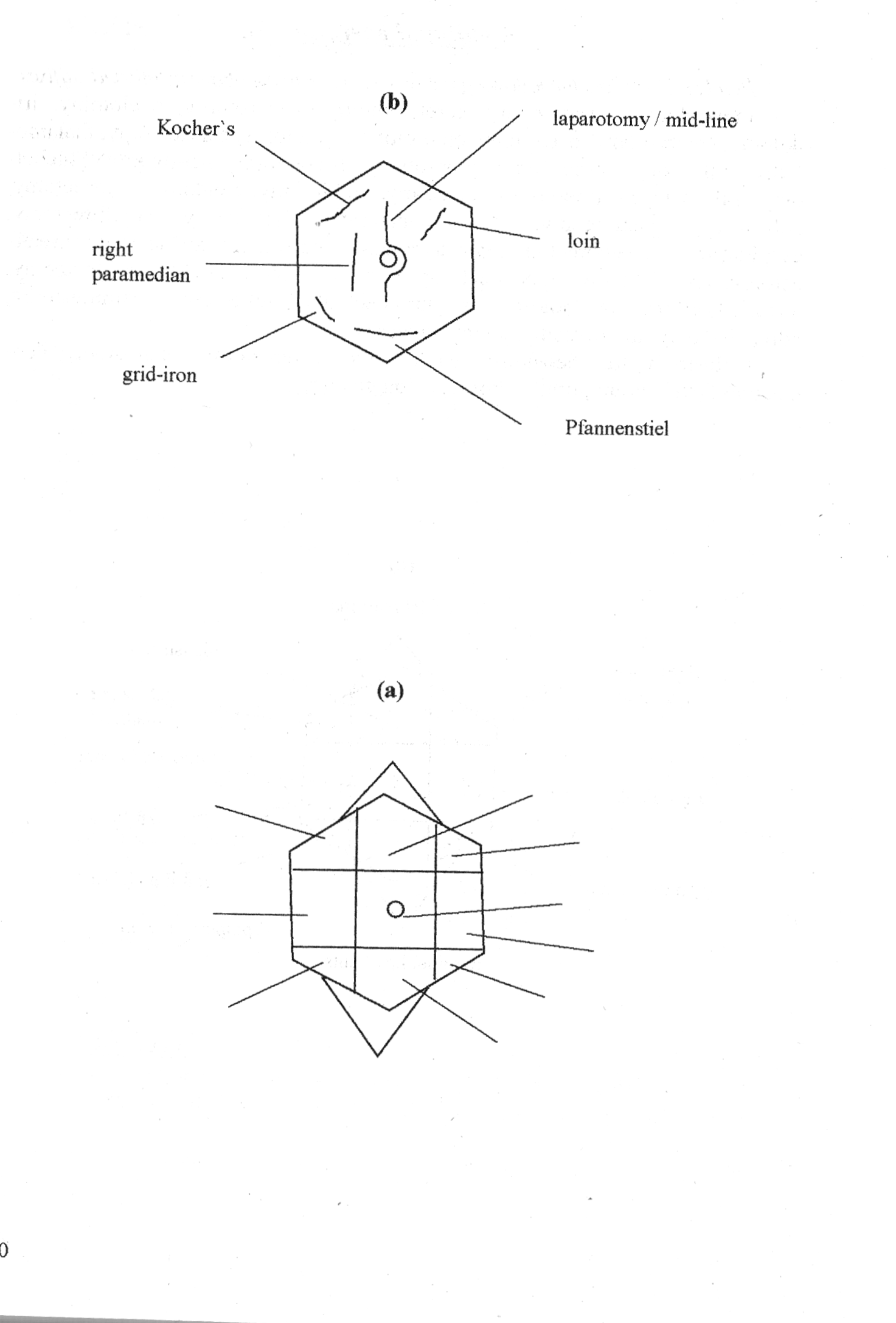
- •Unit I surgery
- •Text 1 surgery
- •Text 2 types of surgery
- •Text 3 surgery and classification of its urgency
- •Text 4 preoperative and postoperative care
- •The Working Day of a Surgeon
- •Unit II language of surgery
- •Tapescript 1.
- •Tapescript 2
- •Unit III The Great Russian Surgeon Pirogov
- •Unit IV first aid station
- •I.Train the pronunciation of the following words:
- •II.Pay attention to the prepositions used in the following word combinations:
- •III. Fill in the blanks with prepositions where required:
- •IV. Vocabulary Training
- •Text 1 first aid station
- •Additional material
- •Topics for Oral Narration Topic 1 surgery
- •Topic 2 giving first aid
- •Contents
Tapescript 1.
Listen to the Lecture.
You will now hear part of a lecture on the language of surgery.
Paragraph I
The subject of today’s lecture is “The Language of Surgery” and in it we shall look at common descriptive terms used by surgeons. First of all look at the first diagram in your books. This shows how the abdomen is often represented in medical notes. The six sides represent the borders of the abdomen. The upper two are the costal margins, that is, the lower end of the rib cage. The vertical lines are the lateral edges of the abdomen, and the two lines forming a “V” shape at the bottom are the inguinal ligaments.
Paragraph II
The diagram shows the abdomen divided into eight areas. The central area is the umbilical region. Lateral to this are the right and left flanks. Above the right flank and below the right costal margin is the right upper quadrant. Note that the left side of the diagram as you look at it on the paper represents the right side of the abdomen. Between the right and left upper quadrants lies the epigastrium. Inferior to or below the right and left flanks lie the right iliac fossa and the left iliac fossa. Between these lies the suprapubic area. All these areas are said to have contents; for example, in the right upper quadrant lie the liver and gall bladder. If a patient had an inflammation of the gall bladder, which is known as cholecyctitis, you would expect to get pain in this area. Similarly, pain in the right iliac fossa could be caused by appendicitis, as the appendix is found in this region.

Paragraph III
Now let’s look at some of the more common terms you will encounter. Words ending in – ostomy, that’s O-S-T-O-M-Y, mean ‘opening onto the skin’. For example, a colonostomy means that the colon is opened onto the skin. Similarly, a gastrojejunostomy is the result of making a communication between the stomach and a loop of jejunum. Another common ending is –plasty, that’s P-L-A-S-T-Y. This means refashioning something to make it work. For example, pyloroplasty means surgically altering the size of the pylorus, which is the outlet of the stomach. The ending –ectomy, that’s E-C-T-M-Y, means cutting something out. For instance, appendicectomy literally means cutting out the appendix. The last ending that I’ll mention today is –otomy, O-T-O-M-Y, which means cutting something open; laparotomy means cutting open the abdomen. If you remember what these ending mean, you will be able to understand words which contain them, even if the words are totally new to you.
Paragraph IV
Now look at the second diagram. This shows a number of lines which represent incisions. An incision is an opening cut in the skin-in this case in the anterior abdominal wall-through which an operation is perfomed. Particular incisions are used for particular operations. For example,the incision used for extracting the gall bladder(the operation of cholecyctectomy) is an oblique incision below the right costal margin. It is called Kocher’s incision after the surgeon who first described it. The mid-line or laparotomy incision lies in the mid-line, as its name suggests, although the cut by-passes the umbilicus. The Pfannensteil incision is a horizontal line lying across the suprapubic region. The grid-iron used for appendicectomies lies in the right iliac fossa. The right paramedian incision lies to the right of the mid-line. The loin incision is used in the renal, or kidney surgery and lies in the upper quadrant and flank regions. Nearly all abdominal operations will use one of these incisions that I’ve listed.

Ex.VII Pay attention to the following prepositional phrases:
1. |
for instance |
например |
2. |
to cut out |
удалить, вырезать |
3. |
through |
через |
4. |
although |
хотя |
5. |
to use for |
использовать для |
6. |
opening onto the skin |
вывод на кожу |
7. |
to be called after |
быть названным именем к-либо |
8. |
to by-pass |
обходить, огибать |
9. |
to lie across |
лежать поперек |
10. |
to the left of |
налево от |
Ex. VIII Read and translate the text of the lecture.
Ex. IX Complete the sentences:
1. Diagram (a) shows .... 2.The six sides of the diagram represent ... 3.The upper sides are ... 4.The vertical lines are ... 5.The two lines at the bottom are ...
6. The abdomen is divided into 9 ... 7.Above the right flank... 8.Each area has its ...9.The left side of the diagram… 10.If a patient had an inflammation…11.Pain in the right iliac fossa …12.The second diagram shows a number… 13. Parti -cular incisions are used…14.The incision used for extracting the gall bladder …15.The midline or laparotomy…16.The Pfannensteil incision… 17.The grid
Iron used for…18. The loin incision is used…19.Nearly all abdominal operations…
Ex. X Try to translate the following words and word combinations without looking into the dictionary:
Pyloroplasty, the inguinal ligaments, to be used in renal surgery, Pfannenstiel incision, costal margins, lies in the right iliac fossa, opening onto the skin,
thorocotomy, the incision used for extracting the gall bladder, the two lines forming a V shape, the outlet of the stomach, pylorus, laparotomy ,an incision through which an operation is performed, colonostomy, tonsillectomy, a horizontal line lying across the suprapubic region, Kocher's incision, an opening cut in the skin, refashioning something to make it work, ureterec-omy, the lower end of the rib cage, the loin incision, jejunostomy, the grid-iron incision, to by-pass.
Ex. XI Complete the following sentences:
1. Cholecyctitis means _____; it causes pain in … .
2. Appendicitis may cause pain in… .
3. Words ending in –ostomy mean ____________, for example… .
4. Words ending in –plasty mean ______________, for example… .
5. Words ending in –ectomy mean _____________, for example… .
6. Words ending in –otomy mean ______________, for example… .
Ex.XII Agree or disagree with the statements:
1. Diagram (a) shows how the body is often represented in medical notes.
2. The right and left flanks are lateral to the umbilical region.
3. Above the flanks are quadrants.
4. Below the flanks are iliac fossae (sing, fossa).
Ex. XIII Answer the following questions:
1. What are the six sides representing the abdomen?
2. What is the central area?
3. What is lateral to the central area?
4. What is above and below the flanks?
5. What is between the quadrants?
6. What is below the umbilical region?
7. Why do surgeons expect to get pain in this or that area?
8. What do words ending in -ostomy mean?
9. What does -plasty mean?
10. What can you tell us about such word endings as -ectomy and -otomy?
11. What does laparotomy (appendicectomy, colonostomy) mean?
12. Do you agree that a) -ostomy means opening onto the skin; b) -otomy means cutting open; c) -ectomy means cutting smth.out?
Ex.XIV What questions would you ask to receive the following information:
1. It is an opening cut in the skin through which an operation is performed.
2. Yes, there are different incisions.
3. Six different incisions are used in abdominal operations.
Ex.XV Speak on the following topics:
1. Look at diagram (a).Tell us how the abdomen is represented in medical notes.
2.Give some examples and describe the meaning of such word endings as –ectomy,-otomy,-ostomy and -plasty, used in medical terminology.
3. Look at diagram (b) and name all the incisions ,used in abdominal operations.
Ex.XVI Listen to the dialogue and pay special attention to the pronunciation of medical terminology.
